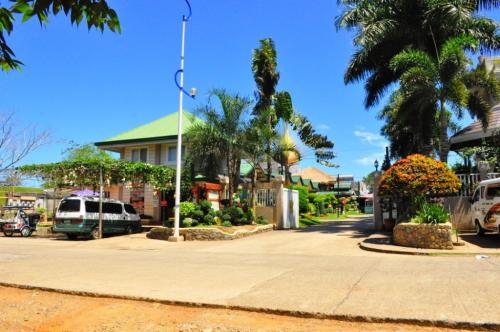December 17-23 | Rogriguez, Rizal, Philippines. The founding anniversary of the town formerly called Montalban of which the highlights of the celebration is the Pamitinan Festival culled after the famous Pamitinan Cave or Cave of Bernardo Carpio, which aims to preserve its contribution to the historic quest for independence by the 8 Katipuneros led by Gat Andres Bonifacio. Likewise a street dancing competition is held to depict the multi-faceted culture of the Montalbeños. Source:VisitMyPhilippines.com
Fullmoon December |Aborlan (Tagbanua Settlements) A tribal ritual asking the God to heal the sick and as a thanksgiving ceremony. Source: Palawan Government
1st week of May| Tagkawayan Beach, Bacungan, Puerto Princesa City Celebrated during the month of the ocean, the festival demonstrates the synergy of man with the vast seas and the ocean. Held every year in the fabulous beaches of the City's west coast, the four-day event include a coastal clean-up, boat-sailing, kite-flying, banca race, tug-o-war, beach volleyball and football, sand sculpture, mountain to sea trekking, mountain bike race, film showing, a grand beach party and concert, and capped by a Weskini bikini open. Source:Visitpuertoprincesa.com
3rd week of December | Dumaguete City Features the Province's oldest and longest Mardi gras parade. Source:Sidlakan Tours & Travel
1st Saturday of December | Loay, Bohol The festival is celebrated in honor of Loay town's second patron, St. Francis Xavier. Colorful activities are lined up, like the agro-industrial fair, group masked street dancing, drum and bugle competition, boat racing along the river, and many more. The event is highlighted by a fluvial parade of the image along the river. Sources:WikipediaPhilippine Tourism
December | Iloilo City This annual musical extravaganza brings out the best of Ilonggo music and musical talent. The Ilonggo music speaks of their culture, history, passion, and love. Source:Corporate.mozcom.com
December | Pototan, Iloilo The Christmas Light Festival in Pototan is an array of colors brought about by Christmas lights during the night. Have you experienced a total blackout and you only have the moon and a star-filled sky to light your way? That is how you will feel when you go to Pototan's Christmas Light Festival. No flourescent /incandescent lights are switched on, not even the lights of your vehicles. All you see are the Christmas lights blinking and lighting the dark night. The festival is held at the 6-hectare town plaza. The festival includes a dancing fountain and a food festival. Source:Corporate.mozcom.com
Early December | Alegria The Kawayan Festival is celebrated with a parade and display of locally-made bamboo products. The festival also features the famous bamboo dance. Kawayan is the Filipino term for bamboo. It is widely-used in making furniture and other household items. The bamboo has been utilized by Filipinos in a number of ways. For example, Filipinos can use a cut-off bamboo branch to cook rice. Source:Cebu Province Official WebsiteWikipedia
December 1 |Imus, Cavite, Philippines. A month long festival celebrates our unique Philippine Christmas holiday. Imus is bathed in thousands of lights, a dazzling array of lanterns of all shapes and outdoor décor that evoke the warm memories of one’s childhood. A food fair featuring native sweets and Christmas delicacies and a trade fair feature the best of Cavite. Nightly entertainment shows and events are capped with the enactment of the Panunuluyan, Imus style. Source:VisitMyPhilippines.com If you happen to be in Mindanao at this time of the year, you may also want to check out the Paskuhan in Surigao City.
December 1| Bula, Camarines Sur, Philippines Old Bula town in the Rinconada district of the province makes way for a colorful December celebration of the Bamboo Festival, giving way to the one of pride of this town which is the bamboo plant where the name of the municipality is derived from. Source:Camarines Sur Website
